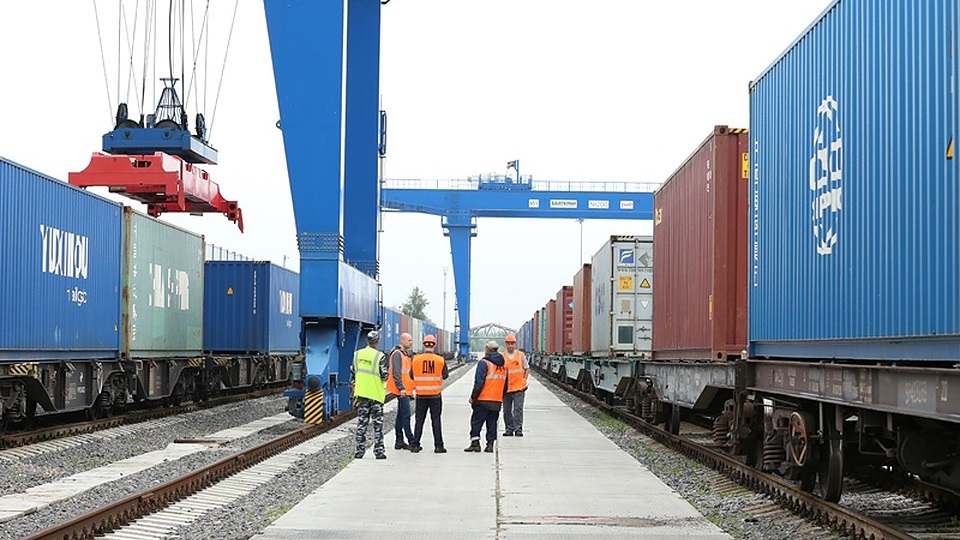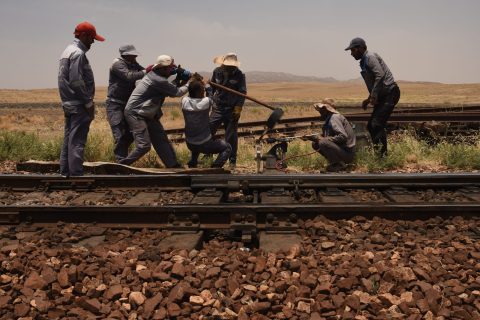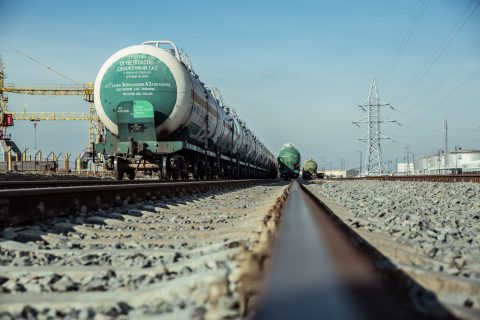‘The Kaliningrad route is young, different financial rules apply’

Operators on the multimodal route via Kaliningrad would like to see a level playing field with the main route via Malaszewicze-Brest, in order to be more competitive. The route via the Russian enclave on the Baltic Sea is the fastest-growing alternative route, but could be financially more attractive. This was concluded during a panel discussion at the European Silk Road Summit 2020.
During this international summit last week, Marcel Stein from DBO Bahnoperator and Dimitrij Hasenkampf from DB Cargo Eurasia joined a discussion with ALexey Grom, CEO of UTLC ERA, the main operator of the route through Kaliningrad. For transit via this ‘Baltic Sea loop’ UTLC ERA applies a special rate that should incentivise a better balance between east- and westbound volumes. This rate is, according to operators, difficult to swallow.
Text continues below the video
What are we talking about?
The special rate for imbalanced cargo volumes is not unconventional. It means that operators pay more per container when there is very little cargo going eastbound on that same route. When a certain eastbound volume is guaranteed, a special rate applies. This is called the ‘balanced transportation rate’.
In the case of Kaliningrad, the threshold for having balanced transportation is relatively high. The special rate only applies when there is an absolute balance; for every 50 containers sent to Europe, another 50 containers should return, and meet in Kaliningrad. On the main route via Malaszewicze-Brest, the special rate applies when for every 100 containers sent to Europe, 38 containers return to China.
Too expensive
As the eastbound volumes are not yet fully materialised, operators are mostly charged the basic rate. “Difficult for the operator is that the basic rate is much higher than the special balanced rate. If the customer is focusing on the costs of the transportation more than the transit time, this means we need to send the train to the Malaszewicze-Brest route”, explains Stein.
According to Hasenkampf, this is currently the biggest challenge on the route via Kaliningrad. “You already have the transloading element (the fact that cargo is transloaded on vessels for the short-sealeg), which makes the route more costly. If you do not have the eastbound volumes, you get more expensive. We cannot apply the same conditions as on the regular route. This doesn’t make the product more competitive.”
Absolutely the same
The carriers admit that attracting eastbound volumes is an important agenda point, one that they are working on. But at the moment, they have to deal with the financial constraints of a relatively new route. As a result, some customers are paying the roundtrip price rather than the one-way price, Stein explains. With that, he took away the assumption that only the roundtrip price is offered. This is certainly not the case, both him and Hasenkampf said. “But as the imbalanced rate is so high, the roundtrip journeys are currently the only ones running.”
According to UTLC ERA, the rates do not differ much from what they charge on the Malaszewicze-Brest route. “It is absolutely the same as we have in Brest: special lower balanced rate and basic higher imbalanced rate. The only difference is the percentage”, a spokesperson said.
New start
The route via Kaliningrad is relatively young, and this makes that it cannot fare on the same principles as the route via Malaszewicze-Brest, which has by now been established. This is one thing all panellists agree about. As the flag carrier of the multimodal link, UTLC ERA has the best intentions with the route too. “We want to have balanced volumes on this route, in order to make it successful”, said Grom during the discussion.
“Currently, we operate around 45-50 thousand TEUs per month on this route. Tomorrow this could be 60 thousand, and 100 thousand after tomorrow. That is what we have in mind at least”, he commented. Asked what he expects these volumes to be in five years, he replied: “Over a million”.
Transit of fresh goods
These are not just wishes. A lot of things are happening behind the scenes in order to encourage these figures to grow. For example, the transit of fresh goods should be possible via Kaliningrad too, if it is up to the operator. At the moment, the electronic seal, which is required for the transit of sanctioned items through Russia, is only applied on the regular route.
“Ironically, when we vowed for this ban to be lifted, we initially proposed the Kaliningrad route to be the main channel for this. But it is a little more complicated here, as we have another transit country in between: Lithuania (Kaliningrad is an enclave). However, it is in the pipeline, talks are currently held within the Russian government to enable the application of electronic seals on this route too.” The CEO does predict these talks to take some time.
More to improve
Another item on the wish list of carriers is the possibility of operating longer trains via Kaliningrad. Stein: this allows a much better utilisation of locomotives, but also a better utilisation of the vessel on the Baltic Sea. This vessel carries 50-100 containers. It now needs to wait for two or three to arrive, and this makes the journey quite complicated. What we would like to see, is that we can combine three trains from China into two trains from Dostyk/Altynkol to Kaliningrad.” According to Grom, also this is in the pipeline.
Did you miss it?
Did you miss the European Silk Road Summit 2020? It is possible to watch the replay of the conference. You can buy a replay ticket here.
You just read one of our premium articles free of charge
Want full access? Take advantage of our exclusive offer





